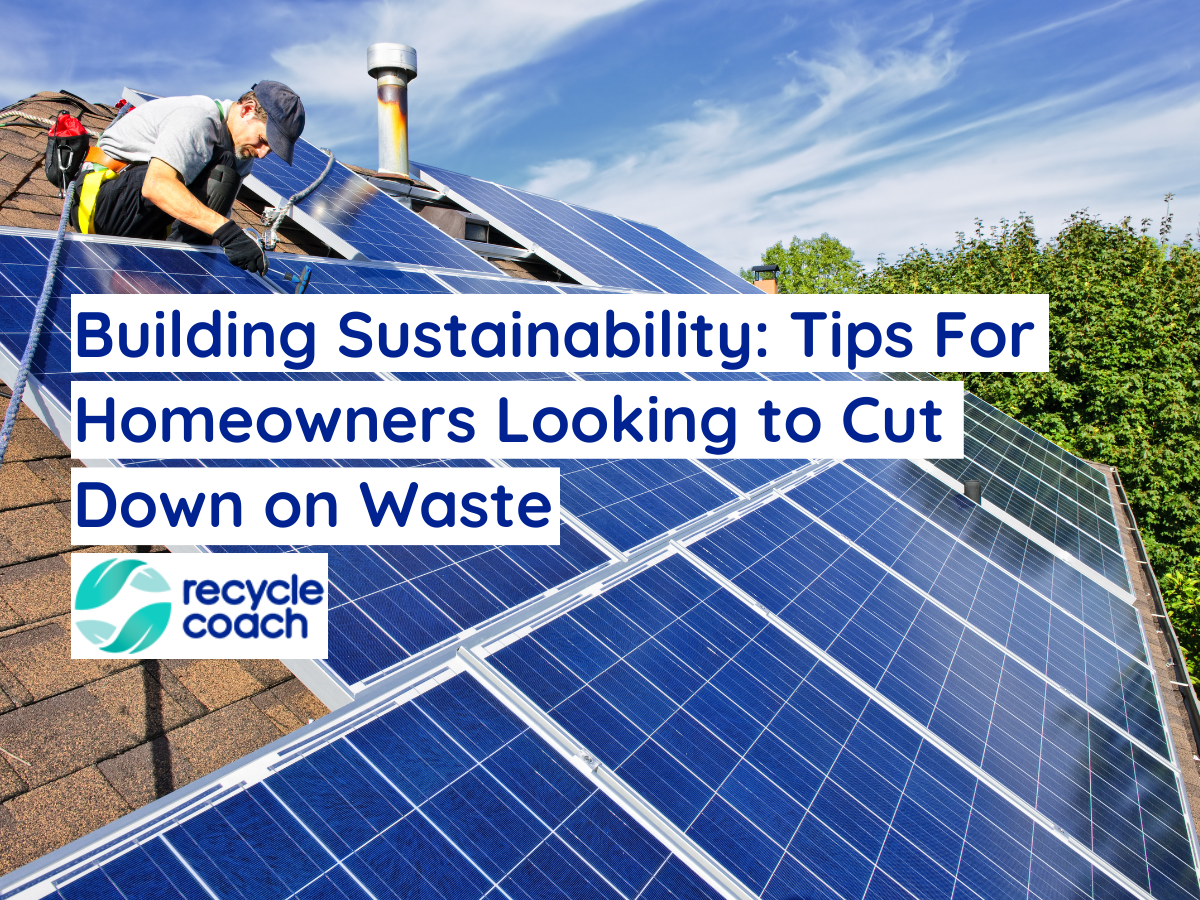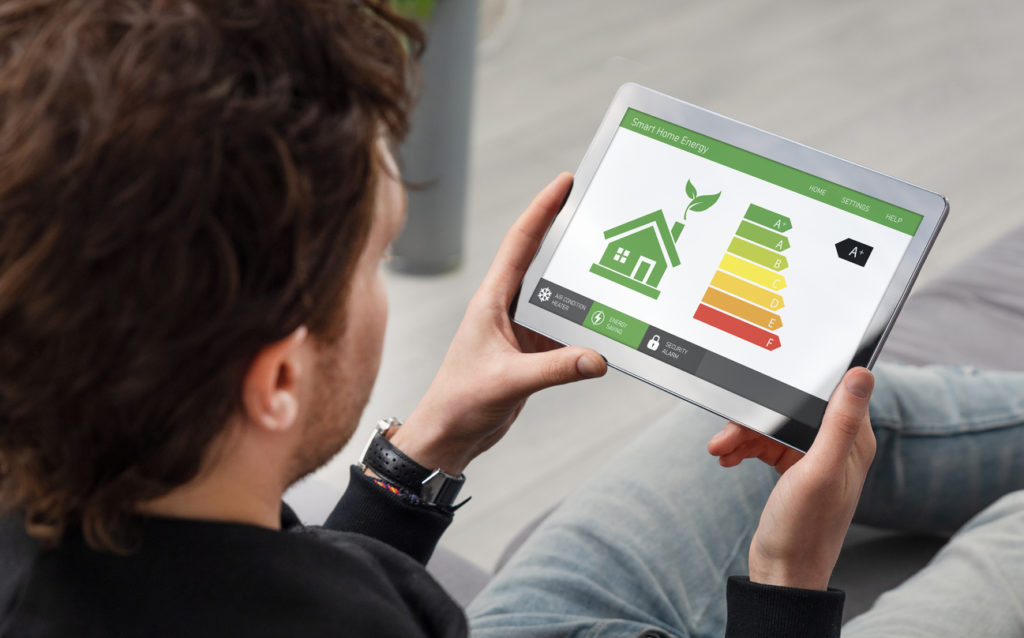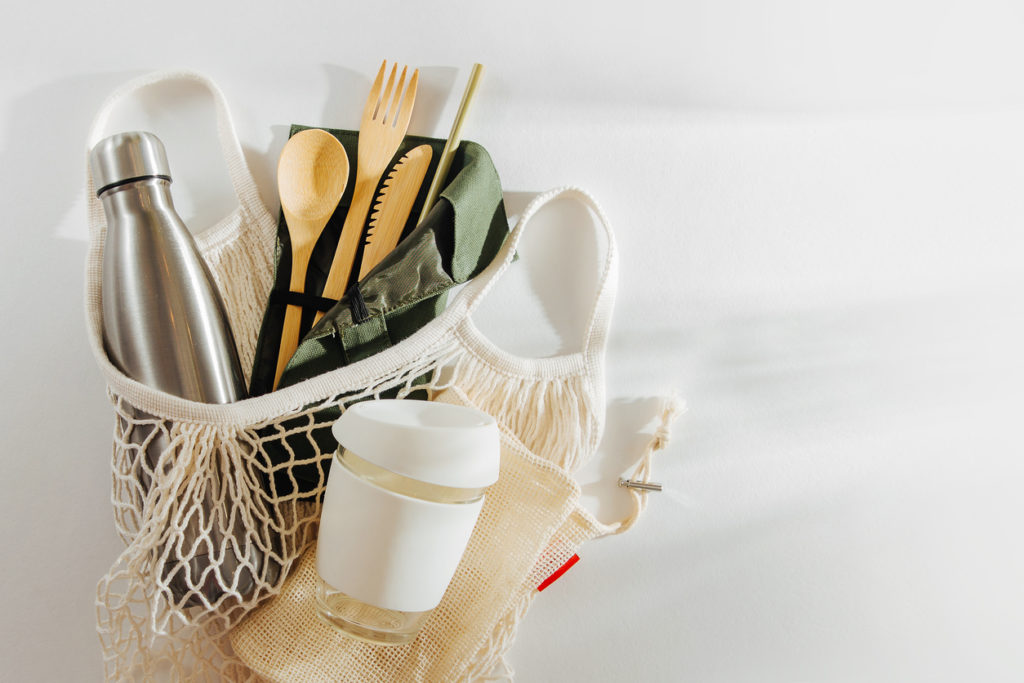Building Sustainability: Tips For Homeowners Looking to Cut Down on Waste

Sustainability is more than just a hot-button issue nowadays. It’s something that’s at the forefront of many homeowners’ minds. You might want to cut energy costs, reduce your carbon footprint, or just do your part for a better tomorrow, and making changes in your home is a great place to start.
However, it can also be a tough task if you’re not sure exactly how to get started.
Thankfully, improving your home’s sustainability doesn’t have to be overwhelming. By making a few changes and upgrades, you can cut down on waste, improve energy efficiency, and benefit your home and family for years to come.
Let’s cover a few tips you can use to cut down on waste and adopt a more sustainable lifestyle at home.
Reduce, Reuse, Recycle

One of the easiest ways to cut down on waste within your home is to start recycling. It might seem like something everyone already does, but you might be surprised to learn that only about 35% of people actually recycle. Why such a low number?
Recycling can be confusing, at times. It’s also not as easy as throwing something away. There are countless garbage cans wherever you go in public, and it’s likely easier to toss something in your can at home rather than set it aside to recycle.
One of the easiest ways to recycle is to create a “recycling station” in your home or outside. Set it up next to your trash can so you don’t have to make any extra effort to put something in the right place.
Of course, finding ways to reuse or repurpose items is just as effective. Most people think of recycling things like cans and bottles, but furniture and textile waste are huge problems, with over 16 million tons of textile waste ending up in landfills each year. Do what you can to breathe new life into your items before throwing them away. Or, consider selling them online or at a garage sale, or donating them to a local thrift store. You might not be able to reuse certain items, but you never know who might have the skills to give something new life.
Just as important is knowing what not to recycle — at least not with your curbside recyclables. These items include things like:
- Plastic bags: Considered one of the most common contaminants in the recycling process, plastic bags must be processed by a different system than that which handles curbside recyclables. Most big box retailers accept plastic bags for recycling.
- Rechargeable Batteries: Batteries must also be dropped off in specific locations to be recycled. Throwing these in with your curbside recyclables, especially rechargeable or lithium-ion batteries, can cause fires at recycling facilities.
- Food waste: While most people know not to put food waste in with their recyclables, some don’t consider that completely. If you’ve put a lime in your beer bottle or can, for example, don’t recycle it. Pizza box soaked in oil with bits of crust left over? Don’t recycle it.
- Anything that can tangle: Even if it’s made of recyclable material, items like electric cords, headphones, wires, etc., can get tangled up in recycling equipment and shut down the recycling process. Certain electronic retailers accept cables and these types of recyclables.
Cut Back on Energy Waste

Energy waste can be a huge problem in the average American home. Thankfully, there are plenty of simple upgrades you can make to reduce your energy consumption. Not only will they help the environment, but they’ll lower your utility bills, as well. Some of the best sustainability upgrades for cutting back on energy waste include:
- Installing solar panels
- Using smart thermostats
- Installing weatherstripping
- Putting in new attic insulation
- Installing low-flow showerheads
- Switching to LED lighting
Investing in energy-efficient appliances is another great way to upgrade your home and save money over time. While these upgrades might cost some money upfront, you’ll make it back through savings quickly, and you can take pride in knowing you’re doing something good for the planet and the future.
Make Upgrades for Sustainable Habits

Investing in waste-reducing upgrades is a great place to start. However, living sustainably, especially at home, requires some habitual changes. The upgrades you put in place can make it easier for those changes to occur without making you feel like you’re “giving up” too much.
Think about where you could cut back, and start there when it comes to cutting down waste. For example, do you end up throwing away a lot of uneaten food at the end of the week? Re-visit your grocery list, take stock of the items you already have, or get creative with leftovers to reduce food waste.
Does your family go through a lot of plastic? There are countless ways to reduce plastic waste in the home, including:
- Investing in reusable water bottles
- Using beeswax wraps
- Switching to cloth diapers
- Buying refillable soap
If you’re trying to cut down on water waste, new appliances and low-flow faucets are great upgrades to consider. But, your habits with those upgrades will make the biggest difference. Take shorter showers. Run the dishwasher and washing machine when they’re full. Don’t let the water keep running in the sink when you’re washing dishes.
Finally, if you want to lower your electric bill and cut back on energy waste, try things like adjusting the thermostat according to demand (or programming your new smart thermostat to change throughout the day!), or utilizing dimmer switches and power strips for your lighting.
Making home improvements to boost sustainability doesn’t have to be overwhelming, expensive, or time-consuming. With a few upgrades and lifestyle changes, you can enjoy a more energy-efficient home with less waste. Your wallet will thank you, and so will the planet. Most importantly, by making these changes in your family home, you’ll show your children the importance of cutting down on waste, which will instill sustainable habits in them well into adulthood.
Author Bio:
Sam Bowman writes about people, sustainability, recycling, and how they merge. He enjoys getting to utilize the internet for the community without actually having to leave his house. He volunteers his time as a local recycling and waste reduction activist, working to help people better navigate proper recycling. In his spare time, he likes running, reading, and combining the two in a run to his local bookstore.